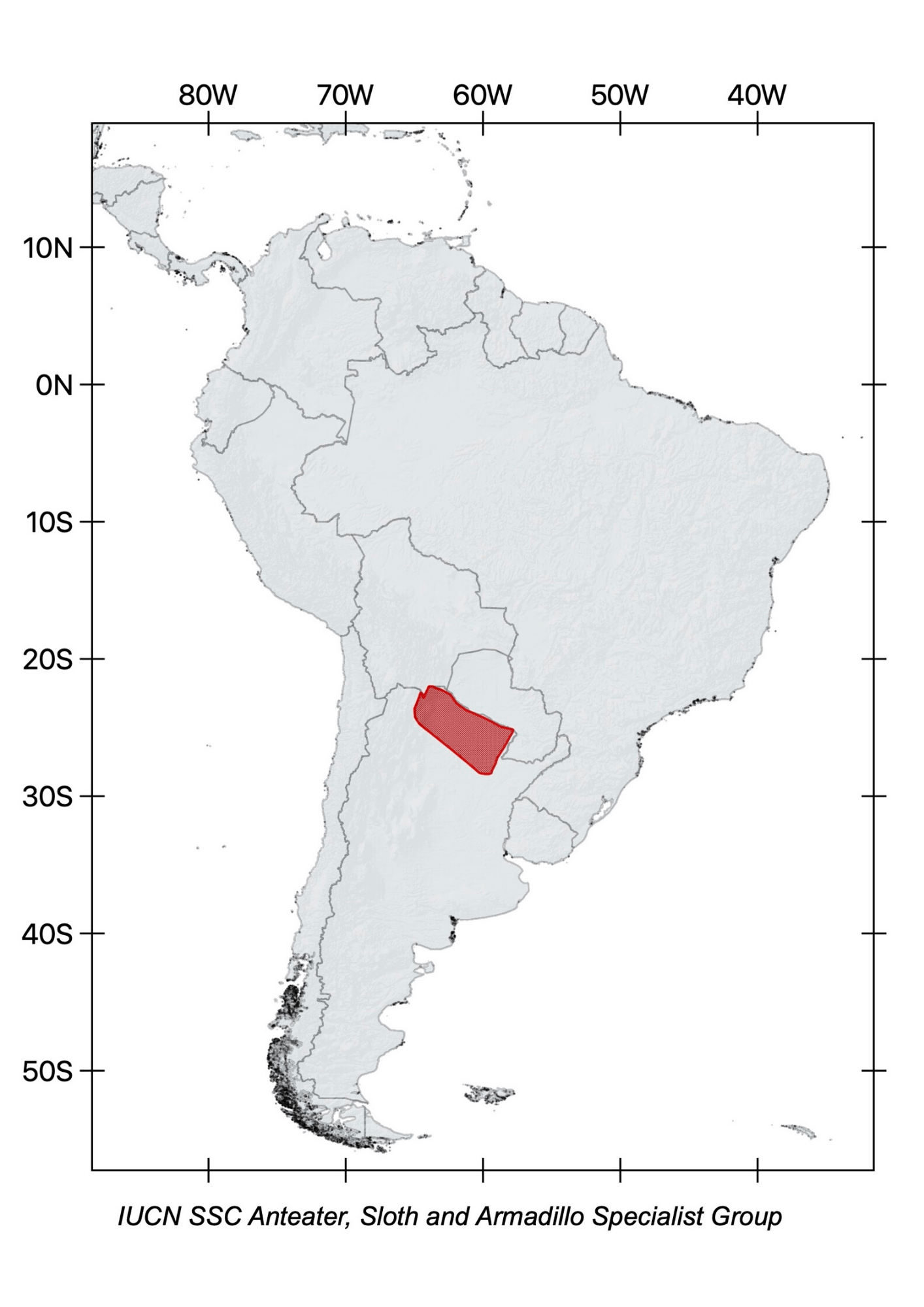Yungas lesser long-nosed armadillo
(Dasypus mazzai)
other common names
Mazza’s mulita
Taxonomy
Order: Cingulata
Family: Dasypodidae
Subfamily: Dasypodinae


description
The Yungas lesser long-nosed armadillo has a head-body length of ca. 31 cm, a relatively long tail of 18–23 cm, and proportionally long ears, of 3.6–3.8 cm. Its carapace usually has 7–8 movable bands. D. mazzai weighs around 2–2.5 kg.

diet
No information is available about the diet of D. mazzai, but based on the knowledge about other Dasypus species, it is assumed that it is an omnivore with a preference for insects.

reproduction
No data are available on its reproductive strategy, but it is possible that it reproduces through polyembryony, which is common in armadillos of the genus Dasypus.

curious facts
This species was considered invalid for a long time and then described as D. yepesi. However, in recent years several authors confirmed by means of morphological and molecular analyses that D. mazzai is the correct name for this taxon. The species was described as D. mazzai by José Yepes in honor of the Argentinean physician Salvador Mazza who dedicated his life to the study and control of the American trypanosomiasis (Chagas disease).

HaBITAT and ECOLOGy
Originally known only from the Yungas forests, it also occurs in the more xeric habitat of the Chaco. Nothing is known about its ecology or population size.

threats
The threats to this species are unknown, but it can be assumed that it is used as a protein source and that habitat destruction is affecting it negatively.

range
This species may be endemic to Argentina. It was originally known from only a few localities in the provinces of Salta and Jujuy, in northwestern Argentina, but it was later confirmed that it also occurs in Santa Fe department. It is possible that it also occurs in neighboring areas in Bolivia and Paraguay.

Population trend
Unknown.

conservation status
Dasypus mazzai is listed as Data Deficient as there is no information on the exact range or the population status of this species, and no knowledge of the threats that are affecting it.